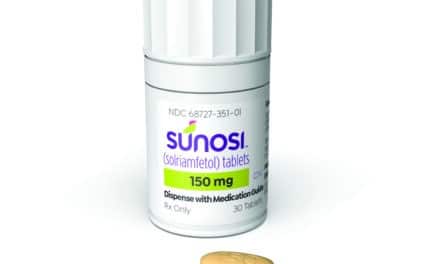A University of Chicago team received a prestigious grant from the National Institutes of Health (NIH) to develop a novel medication to treat sleep apnea.
The grant is designed to accelerate discovery of effective pharmaceutical treatments during the critical second stage of a drug’s development, the period between the discovery of a potential new medication and the first round of human clinical trials. The funding—which amounts to about $1.7 million annually for each project for up to 5 years—is administered by the NIH’s Heart, Lung and Blood Institute.
The sought-after Centers for Advanced Diagnostics and Experimental Therapeutics in Lung Diseases Stage II grants (known as CADET II grants) were awarded to 10 teams nationwide. Each program has already identified and validated a drug target in a significant new treatment approach.
One of the Chicago teams, led by Nanduri Prabhakar, PhD, the Harold Hines Jr. professor of medicine, will focus on developing the first drug to prevent sleep-disordered breathing.
Many patients rely on continuous positive airway pressure (CPAP), a machine that helps patients breathe steadily at night, but “patients do not like this treatment,” Prabhakar says in a release, “and compliance is poor.”
For almost 20 years, he and colleagues have focused instead on chemical signals released by the carotid bodies, small clusters of cells that are extraordinarily sensitive to changes in blood oxygen levels. Found in the carotid arteries, on both sides of the throat, these are the primary sensors of blood-oxygen levels. When levels drop, they send signals to brainstem neurons that regulate breathing. This promptly initiates the next breath.
In sleep apnea, however, the carotid bodies can become hypersensitive to certain signals. They no longer react appropriately and thus fail to maintain a steady respiratory rate. As a result, people with severe apneas briefly—or sometimes not so briefly—stop breathing, often hundreds of times a night.
In 2010, Prabhakar and colleagues described a key malfunction that disrupted carotid body responses, triggered by overactivation of an enzyme, cystathionine-gamma-lyase (CSE). This enzyme increases production of hydrogen sulfide. Overstimulation of the system, however, appeared to make the carotid body hypersensitive.
This made Prabhakar’s team suspect that CSE was a potential drug target. They developed a small molecule to inhibit its activation. Early tests found that it could normalize sleep-disordered breathing in a rodent model of sleep apnea—also developed by the Prabhakar laboratory.
“Our mice typically have about 60 apneas per hour,” Prabhakar says. “Thirty milligrams of our compound produces a marked reduction in apneas. At 90 milligrams, they have very few at all.”
CADET II funding will enable the team to “optimize our drug for efficacy, potency, and safety,” Prabhakar says
“We have a lead compound that can be taken by mouth and a good animal model. The team at UIC will work to make our compound more potent and specific. They have the tools to screen 100,000 related compounds and help us select the most effective.
“We are hoping they can make it ten times more potent,” Prabhakar says. “And then David McCormick’s unit at IIT can unravel the toxicities and help us improve the chosen compound or how it is administered.
“It’s been more than 80 years since the carotid bodies were discovered,” Prabhakar says, “work that received the Nobel Prize in 1938. But no one has yet developed a drug that could alter their function. After all that time, there is still a real need for better ways to prevent sleep apnea. I hope this is a light at the end of that tunnel.”
Prabhakar’s team is working with Pavel A. Petukhov, PhD, at the University of Illinois at Chicago’s newly established Collaborative Engagement in Novel Therapeutic Research and Enterprise (UICentre) to enhance the potential medication. The team will also work closely with the Illinois Institute of Technology’s Research Institute, directed by David McCormick, PhD, to characterize the pharmacology and toxicology of the treatment and study how to reduce or manage potential side effects.
Funding for the project comes in two phases. In the first 2 years, the researchers will work to improve the precise targeting and efficacy of the compound and examine the absorption, metabolism, distribution, and elimination of the drug. If they meet key milestones, the next 3 years will focus on understanding all the benefits and potential risks of the drug in animal models and learning how to manufacture the drug and scale up production.
The team hope to begin early clinical testing of the resulting medications by 2020.
Another UChicago team, led by Julian Solway, MD, the Walter L. Palmer Distinguished Service professor of medicine and pediatrics, was also awarded the grant and will concentrate on a novel treatment for severe asthma.




